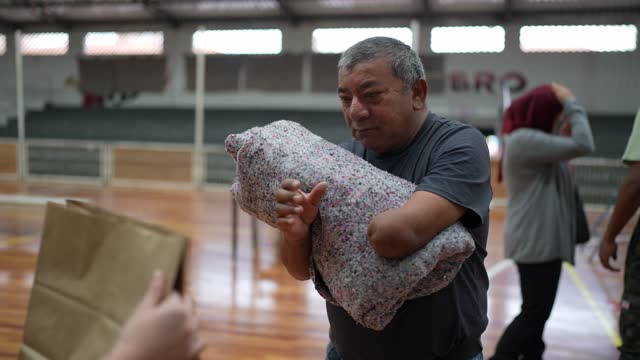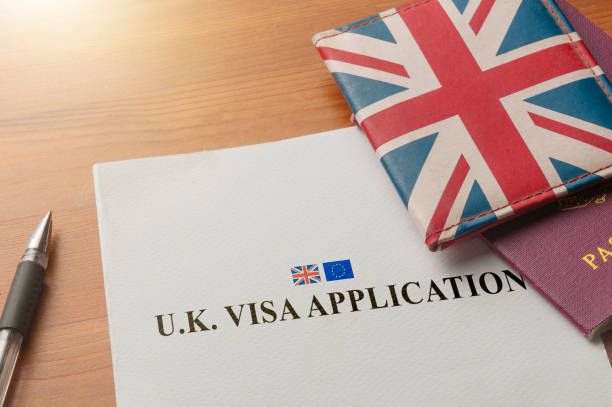Crossing the U.S. Border: An Asylum Seeker’s Guide
Crossing the U.S. Border: An Asylum Seeker’s Guide
Seeking asylum in the United States is a complex, often challenging journey that many individuals undertake in hopes of escaping persecution or severe threats to their lives and well-being. The U.S. has long been a destination for those fleeing unsafe conditions, offering asylum as a legal avenue for protection. This guide provides a comprehensive overview of the asylum process, from understanding the initial steps at the border to navigating the legal proceedings involved.
What Is Asylum?
Asylum is a form of legal protection granted to individuals who have fled their home countries due to fear of persecution. This persecution can be based on race, religion, nationality, political opinion, or membership in a particular social group. Asylum seekers are distinct from other immigrants, as they are specifically seeking safety from harm and protection under U.S. immigration law.
Asylum Seekers vs. Refugees: Refugees apply for protection from outside the U.S., often through the United Nations or U.S. embassies, while asylum seekers apply from within the U.S. or at its borders.
Asylum Seekers vs. Immigrants: Immigrants typically move to the U.S. voluntarily for reasons such as employment, education, or family reunification, whereas asylum seekers are forced to flee due to threats to their lives.
Asylum provides a vital legal path for those in genuine need, offering safety and stability in the U.S., with the opportunity to eventually apply for permanent residency.
Legal Rights of Asylum Seekers at the U.S. Border
When asylum seekers reach the U.S. border, they have the right to request asylum. U.S. law and international agreements, such as the 1951 Refugee Convention, ensure that individuals are protected from being returned to countries where they face threats. Asylum seekers are protected under these laws, and they cannot be immediately deported without an assessment of their claims.
Key rights include:
- Right to Request Asylum: Asylum seekers can express their intent to seek asylum to Customs and Border Protection (CBP) officials at any border crossing or port of entry.
- Protection from Refoulement: The principle of non-refoulement prohibits the U.S. from returning individuals to places where they may face persecution.
However, policies may vary depending on current U.S. government regulations, including changes in border policies that can impact the availability of asylum processing at specific ports of entry.
Steps to Apply for Asylum at the Border
For asylum seekers who reach the U.S. border, the following steps outline the application process:
- Step 1: Approach a Port of Entry or Cross the Border: Asylum seekers can approach any official U.S. port of entry to request asylum. Alternatively, individuals who cross the border without prior authorization can still request asylum by presenting themselves to CBP officials. It’s essential to clearly express the intent to seek asylum to ensure that the application process begins promptly.
- Step 2: Express Intent to Seek Asylum: Upon making contact with CBP officials, the asylum seeker must explicitly state their desire to seek asylum in the U.S. This step initiates the asylum request and moves the individual to the next phase of the process.
- Step 3: Initial Screening and Credible Fear Interview: The credible fear interview is a key screening stage where an asylum seeker must demonstrate a “credible fear” of persecution if returned to their home country. The interview is conducted by an asylum officer who evaluates the basis for the fear and assesses if the individual meets the initial criteria for asylum.
- Step 4: Detention or Release Pending Asylum: Hearing Depending on the case and other factors, asylum seekers may be detained in immigration facilities while awaiting their hearing or may be released under certain conditions, such as providing a U.S.-based address. Those released are often monitored and required to report regularly to immigration authorities until their hearing date.
Key Documentation Needed for Asylum Applications
Successfully applying for asylum requires thorough documentation to support an individual’s claim. Preparing the right documents can strengthen an asylum case and expedite the process. Essential documents include:
- Identification and Proof of Origin: Valid identification, passports, or any documentation proving the applicant’s nationality are critical.
- Evidence of Persecution: Detailed accounts, police reports, medical records, and other evidence illustrating threats or harm due to race, religion, or other qualifying factors.
- Additional Supporting Documents: Letters from witnesses, affidavits, and any other documentation that can corroborate the applicant’s fears and substantiate the credibility of their asylum claim.
Understanding the ‘Credible Fear’ Interview
The credible fear interview is one of the most critical stages in the asylum process. During this interview, asylum seekers are assessed to determine whether they have a valid and credible fear of persecution if they return to their home country. This interview is typically conducted by an asylum officer who will review the asylum seeker’s testimony and other evidence provided to determine if they meet the threshold for further asylum proceedings.
What Happens During the Interview
- The asylum seeker is asked to explain why they fled their country and the threats or harms they face.
- The officer will probe the specifics of the claim, including incidents of violence, persecution, or any threats that could have led to their departure.
- The applicant will also be asked about any evidence supporting their claim, such as police reports, medical documents, or personal statements.
Common Questions:
- Why did you leave your home country?
- Have you faced harm in your country? If yes, what kind of harm?
- Is there a particular individual or group threatening you?
- Are you afraid of returning due to political opinions, religion, race, or social group?
How to Prepare:
- Be honest and clear about the reasons for seeking asylum.
- Provide as much detail as possible, and back up claims with documents or other evidence where applicable.
- It’s vital to provide a consistent and accurate narrative, as any discrepancies or contradictions could harm the credibility of the claim.
If the asylum seeker passes the credible fear interview, they are typically referred for a full asylum hearing, where they will present their case before an immigration judge. If the interview is unsuccessful, they may face deportation, but there may still be opportunities to appeal the decision.
Navigating the Asylum Application Process
Once an asylum seeker passes the credible fear interview, the application moves forward into a more comprehensive process. Here are the next steps:
Step 1: Asylum Hearing
After the credible fear interview, asylum seekers are scheduled for a hearing before an immigration judge. This hearing is the official platform where the asylum seeker presents their case for asylum. This hearing is vital because it is where the decision on granting asylum is made.
Step 2: Waiting for a Decision
The asylum hearing can be a long and arduous process, with waiting periods varying significantly depending on the backlog in immigration courts. The applicant must wait for the decision from the judge, which can take anywhere from several months to a few years, depending on the case’s complexity and the court’s schedule.
Step 3: Appeal Process
If the asylum claim is denied by the immigration judge, the applicant has the right to appeal the decision to the Board of Immigration Appeals (BIA). If the BIA also denies the appeal, the applicant may pursue further legal action, including seeking review by a federal court.
Step 4: Final Approval and Adjustment of Status
If the asylum claim is granted, the asylum seeker becomes an asylee and can begin the process of adjusting their status to a lawful permanent resident (green card holder). The individual can apply for permanent residency one year after being granted asylum.
How Long Does It Take to Claim Asylum?
The asylum process timeline varies depending on several factors, including the individual case’s complexity, the backlog of cases, and the applicant’s country of origin. On average, it can take anywhere from several months to several years to complete the asylum process. Here’s a breakdown of potential timelines:
- Initial Screening and Interview: This can take a few weeks to a couple of months after filing the asylum application, depending on the availability of asylum officers and the asylum seeker’s location.
- Asylum Hearing: After the credible fear interview, the actual asylum hearing typically happens within a few months to a year. However, applicants may experience delays due to court backlogs.
- Decision: After the hearing, a decision may take several weeks or months to be rendered, depending on the judge’s caseload.
Factors that can delay the process include:
- Court backlogs: Immigration courts are often overwhelmed with cases, leading to delays in hearings and decisions.
- Complicated cases: Applicants with complex claims may require additional documentation or expert testimony, which can extend the process.
- Changes in immigration law or policy: Shifts in U.S. government policies, such as restrictions on asylum claims or new immigration reforms, can lead to delays or complications.

Can Asylum Seekers Work in the U.S.?
One common question asylum seekers often ask is whether they are allowed to work while their case is pending. The answer is yes, but with certain restrictions.
- Eligibility for Work Authorization (EAD): Asylum seekers can apply for work authorization in the U.S. after their asylum application has been pending for at least 150 days. This means that asylum seekers cannot work immediately upon arrival but can apply for an Employment Authorization Document (EAD) once the required waiting period has passed.
Work Authorization Process:
- After the 150-day mark, asylum seekers can submit an application for an EAD to the U.S. Citizenship and Immigration Services (USCIS).
- The application process typically takes a few months, and asylum seekers must show that they are waiting for a decision on their asylum claim.
- It’s important to note that work permits are typically valid for one year, and asylum seekers must renew their EADs while their asylum claim is pending.
Employment Restrictions:
- Asylum seekers with EADs are allowed to work in any job, but they are restricted from accessing certain public benefits or participating in government programs intended for U.S. citizens and lawful permanent residents.
- Depending on the applicant’s immigration status and the outcome of the asylum claim, further restrictions may apply once asylum is granted.
Potential Challenges and Obstacles for Asylum Seekers
Asylum seekers often face numerous challenges and obstacles during the application process, from navigating legal complexities to enduring prolonged waiting periods. Some common challenges include:
- Border Policies and Restrictions: Recent changes in U.S. immigration policies, including those under the Trump administration, have significantly impacted asylum seekers, particularly at the southern border. These policies have included stricter asylum eligibility requirements, the “Remain in Mexico” policy, and limited access to asylum processing at certain ports of entry.
Common Reasons for Asylum Denial:
- Insufficient evidence: If the asylum seeker cannot provide compelling evidence to support their claim of persecution, the application may be denied.
- Credible fear issues: Inconsistent statements or inability to explain the reasons for fleeing their home country may lead to denial.
- Failure to meet legal criteria: Asylum claims that do not meet the legal definition of persecution or those that fall outside the protected grounds of race, religion, or political opinion can be rejected.
- Prolonged Detention and Uncertainty: Many asylum seekers are detained in immigration detention centers during the process, often for extended periods. The prolonged uncertainty of waiting for a decision can be mentally and emotionally taxing.
Legal Support and Resources for Asylum Seekers
Navigating the U.S. asylum process can be complex, and legal support is crucial to increasing the chances of a successful claim. Many asylum seekers face challenges in gathering the necessary documentation, preparing for interviews, and understanding the intricacies of U.S. immigration law. Fortunately, there are several resources available to assist.
Legal Aid Organizations
Numerous nonprofit organizations and legal clinics offer free or low-cost legal services to asylum seekers. These organizations provide:
- Legal consultations to help applicants understand their rights and the asylum process.
- Assistance in filling out asylum applications and gathering necessary documents.
- Representation in court during hearings and appeals.
Some prominent organizations that assist asylum seekers include:
- American Civil Liberties Union (ACLU): Offers resources and legal aid in immigration cases.
- Immigrant Legal Resource Center (ILRC): Provides educational materials, legal support, and resources for immigrants.
- The Refugee and Immigrant Center for Education and Legal Services (RAICES): Focuses on providing free legal assistance to immigrants and refugees.
Online Resources:
The internet offers a wealth of resources, including:
- Official U.S. government websites like USCIS.gov and the Department of Homeland Security (DHS) website, which provide guidance on the asylum process, forms, and application procedures.
- AsylumConnect: A platform designed to connect asylum seekers with trusted service providers, including legal aid, housing, and employment support.
- Legal Representation: While asylum seekers can represent themselves in immigration court, it is highly recommended to seek professional legal counsel. An immigration lawyer or accredited representative can provide essential help in navigating the asylum process and presenting the case effectively in court. An attorney can also help asylum seekers address complex legal challenges, such as applying for asylum from detention or appealing a denial.
Life as an Asylum Seeker in the U.S.: What to Expect
The period between filing an asylum claim and receiving a decision can be stressful and uncertain. Understanding what life will be like during this time is crucial for managing expectations and making informed decisions.
Living Conditions During the Waiting Period
While awaiting an asylum decision, many asylum seekers face difficult living conditions. They may live in temporary housing, shelters, or even detention facilities, depending on their circumstances.
- Those who are released from detention may live with family, friends, or in affordable housing, though access to housing can be limited.
- Access to healthcare and public services is often restricted, although some asylum seekers can apply for emergency medical services or low-cost community health programs.
Restrictions on Public Benefits
Asylum seekers are generally ineligible for most government assistance programs while their case is pending. They may not qualify for welfare, food stamps, or other social benefits available to U.S. citizens and lawful permanent residents.
Education and Employment:
- Education: Asylum seekers can attend public schools for their children, and adult education programs may be available in certain areas.
- Employment: As mentioned earlier, asylum seekers can apply for work authorization after 150 days of their case being pending. Once granted, they can work legally in the U.S. but are typically not eligible for certain public benefits, such as health insurance or unemployment benefits.
Pathway to Permanent Residency
If an asylum seeker’s claim is successful, they can eventually apply for lawful permanent residency (a green card) after one year of being granted asylum. After five years of holding permanent resident status, the individual can apply for U.S. citizenship. This pathway provides long-term stability, though it can take several years for asylum seekers to fully adjust to permanent residency status.

Recommendations and Tips for Success
The asylum process can be daunting, but preparation and perseverance can greatly enhance the chances of a successful claim. Here are key recommendations and tips for asylum seekers:
Gather Strong Evidence
The strength of your asylum claim often depends on the evidence you can provide. Ensure you gather all relevant documents, such as:
- Police reports, medical records, and affidavits from witnesses.
- Letters from human rights organizations or other groups that can attest to the risks you face.
- News articles or reports that detail the persecution or threats in your home country.
Be Honest and Consistent
During interviews and hearings, it’s vital to be honest and consistent. Discrepancies or contradictions in your testimony could hurt your claim. Explain in detail why you fled your country, and if possible, provide concrete examples of threats or harm you faced.
Prepare for the Credible Fear Interview
The credible fear interview is a pivotal moment in your asylum case. Be clear and concise when answering questions. If you have legal representation, ensure that they help you prepare adequately for the interview. Remember that the goal is to prove that you have a credible fear of returning to your home country.
Seek Legal Help
Although the asylum process can be navigated without a lawyer, seeking legal representation is highly recommended. A skilled immigration attorney can help ensure that all paperwork is filed correctly, and they can represent you in hearings, increasing your chances of a successful outcome.
Frequently Asked Questions (FAQs)
Q1: Can I request asylum at any U.S. border location?
Yes, asylum seekers can request asylum at any official U.S. port of entry, whether by land, sea, or air. If you cross the border without authorization, you can still request asylum by presenting yourself to Customs and Border Protection (CBP) officials at the first available point.
Q2: How long does the asylum process typically take?
The asylum process can take anywhere from several months to several years, depending on factors such as the complexity of the case, court backlogs, and any legal challenges or appeals. It’s important to be patient and prepared for a potentially lengthy wait.
Q3: What should I do if my asylum claim is denied?
If your asylum claim is denied, you have the right to appeal the decision to the Board of Immigration Appeals (BIA). If the BIA denies your appeal, you may be able to seek further review from a federal court. It’s important to consult with an immigration lawyer if this happens.
Q4: Can I bring my family with me when seeking asylum?
Yes, you can apply for asylum on behalf of your spouse and children under the age of 21. They can be included in your asylum application or be added later through a follow-to-join process if your asylum is granted.
Conclusion
Crossing the U.S. border and seeking asylum is a life-altering decision that requires careful consideration, planning, and understanding of the legal process. By gathering the necessary evidence, seeking legal representation, and staying informed, asylum seekers can improve their chances of a successful claim. Though the process can be long and difficult, the opportunity to secure safety and protection in the U.S. can offer a new beginning for those fleeing persecution.



